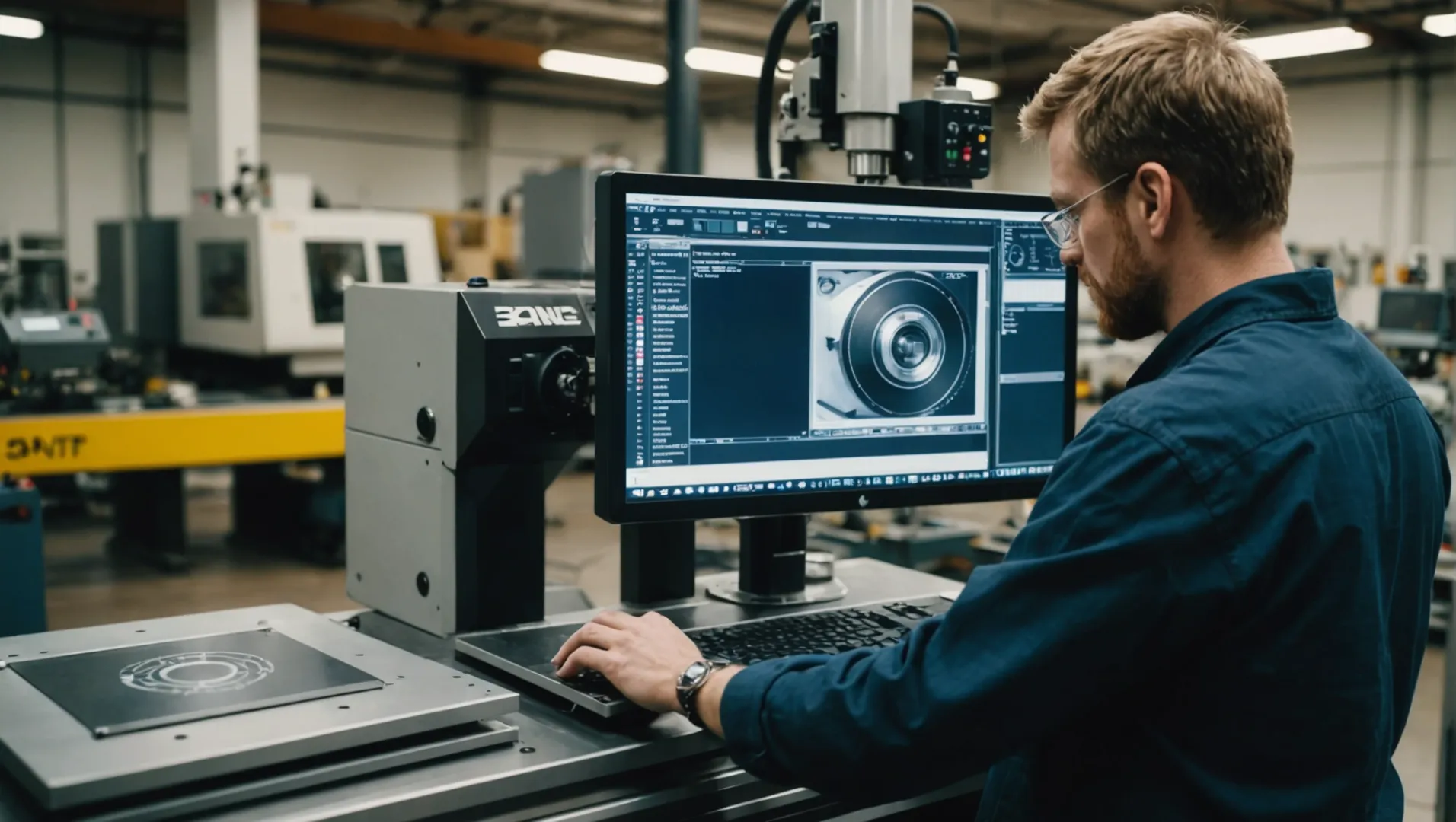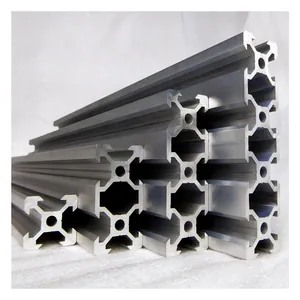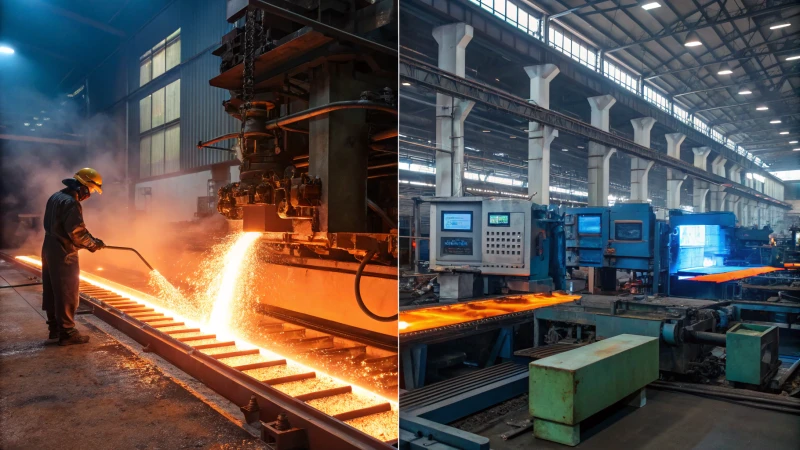Can CNC Machining Improve Aluminum Heat Sink Performance?

CNC post-processing might seem like an optional upgrade for heat sinks—but for many of our clients, it has become an essential step to enhance thermal efficiency and product fit.
Yes, CNC machining significantly improves the precision, surface finish, and overall performance of aluminum heat sinks. It allows for custom cuts, drilling, and shaping that improve heat dissipation.
At Sinoextrud, we integrate CNC machining into our heat sink production to help clients in automotive, LED lighting, and power electronics achieve exact form and function.
Do You Provide CNC Finishing Services for Heat Sinks?
Many customers ask us whether we support advanced finishing. The answer is yes—we offer a full suite of CNC services, particularly tailored to post-process aluminum heat sinks.
Yes, we provide CNC finishing services, including milling, drilling, and slotting for custom heat sink requirements. Our capabilities support prototypes and large-volume runs.

Our CNC finishing services are particularly popular among clients producing high-wattage LED lights, power supplies, and control modules. These applications often demand very specific geometries for optimal airflow and fit.
CNC Heat Sink Services Offered at Sinoextrud
| Process | Application |
|---|---|
| CNC Milling | Flattening base surfaces, precision shaping |
| CNC Drilling | Mounting holes, thermal sensor placement |
| CNC Slotting | Enhancing airflow between fins |
| Deburring | Removing sharp edges post-machining |
CNC adds a second level of precision to our extruded products. After the heat sink is extruded in bulk using our 500–4500 ton presses, it moves to our CNC workstations for any necessary fine-tuning. We use 3-axis and 5-axis machines depending on complexity. For example, a custom LED housing might require a cross-drilled hole at an angle—a perfect job for 5-axis CNC.
Sinoextrud does not provide CNC post-processing services for heat sinks.False
We do provide CNC finishing services, including drilling, milling, and slotting for aluminum heat sinks.
Sinoextrud offers CNC drilling and slotting as part of heat sink post-processing.True
These services help ensure proper airflow, mounting compatibility, and dimensional accuracy.
What CNC Processes Can Be Applied to Aluminum Heat Sinks?
Heat sinks need more than just good material. They need geometry that maximizes surface area and airflow. CNC processes are the best way to make these details a reality.
CNC milling, drilling, slotting, countersinking, and engraving are all suitable for aluminum heat sinks. These processes ensure tight tolerance and perfect fit.

Aluminum is soft, conductive, and corrosion-resistant, making it perfect for CNC machining. We frequently use the following CNC processes:
Common CNC Machining Processes for Aluminum Heat Sinks
| CNC Process | Typical Use Case |
|---|---|
| Milling | Creating flat or angled surfaces, fitting areas |
| Drilling | Bolt holes, wire passages, sensor integration |
| Slotting | Cutting airflow gaps between fins |
| Tapping | Adding threaded holes for fasteners |
| Engraving | Product codes, company logos |
| Countersinking | Smooth screw seating for flush finishes |
Each of these steps happens after extrusion. We often design the extruded shape to be slightly oversized. That way, the CNC tools can shave down material exactly where needed, especially in high-precision zones. This is common in thermal modules for CPUs and EV power systems.
Only milling can be used on aluminum heat sinks.False
Aluminum heat sinks can be processed using multiple CNC techniques like drilling, slotting, and tapping.
Slotting is a CNC process used to enhance airflow in aluminum heat sinks.True
Slotting creates gaps between fins or channels for better heat dissipation.
What Tolerance Levels Can CNC Achieve on Your Products?
Not all heat sinks require ultra-tight tolerances—but when they do, CNC is the only way to get there. Whether it’s a press-fit part or a mounting base, precision matters.
Our CNC machining can achieve tolerances as tight as ±0.02mm, depending on the complexity and tooling used. Standard tolerance is ±0.05mm.

Clients from the automotive sector and high-frequency electronics rely on these tolerance levels for seamless integration with casings, PCBs, or structural frames.
Typical CNC Tolerance Levels at Sinoextrud
| Feature | Tolerance Achievable |
|---|---|
| Mounting holes | ±0.02mm to ±0.05mm |
| Flatness (machined base) | ±0.05mm per 100mm |
| Fin slotting width | ±0.05mm |
| Threaded hole position | ±0.03mm |
To maintain consistency, we use calibrated CNC machines and inspect every batch using CMM (coordinate measuring machines). If your design calls for heat sinks that "just fit" every time, we can help.
CNC machining can achieve tolerances as tight as ±0.02mm on aluminum parts.True
With proper tools and calibrated machines, high-precision CNC cuts are possible.
Standard CNC tolerances on aluminum heat sinks are usually ±0.5mm.False
That would be too loose for most industrial applications; our standard is ±0.05mm.
Can CNC Be Used to Drill, Slot, and Shape Fins?
When it comes to fins, many assume extrusion is the end of the road. But for truly custom solutions, CNC can do a lot more—like drill through fins or shape their edges.
Yes, CNC is used to drill, slot, and reshape fins to improve airflow or adapt to mechanical constraints.

We work with clients designing next-gen electronics where heat density is high. Standard extrusion creates fins with fixed geometry. But what if you want:
- Different fin heights on one heat sink?
- Airflow channels within the fins?
- Drilled holes between fins for mounting?
This is where CNC takes over. Using high-RPM tools and fine bits, we can cut into fins without bending or damaging them. We often use slotting to open up airflow, and drilling to allow screw placement or sensor mounting. It’s also possible to reshape fin tips to reduce drag or match a casing.
This level of flexibility is hard to achieve without CNC. And because we use high-grade 6063 and 6061 aluminum, we avoid chatter and get clean cuts.
CNC cannot be used to drill or slot the fins of aluminum heat sinks.False
It can. We use CNC for drilling and slotting fins to customize thermal performance.
CNC allows reshaping of fin geometry for better airflow or casing fit.True
Fin tips, gaps, and even height differences can be customized with precision CNC tools.
What’s the Added Cost for CNC Post-Processing?
Cost is always a factor. CNC does add to the base cost of extrusion—but the added precision, better fit, and fewer rejected parts often offset that.
The added cost for CNC post-processing depends on complexity, ranging from 10% to 40% of the base extrusion price.
A basic heat sink may only need some drilled holes and slotting. A high-end power module may need 5-axis contouring and thread tapping. We calculate CNC pricing based on:
- Number of operations (drill, mill, slot)
- Tool changes and machine time
- Quantity ordered
- Setup cost (especially for prototypes)
Sample Cost Breakdown
| Operation Type | Cost Increase (vs. base extrusion) |
|---|---|
| Basic drilling | +10% |
| Milling large areas | +20% |
| Multi-axis slotting | +30% |
| Threading and tapping | +5% |
| Full custom CNC | +40%+ |
We always provide a transparent quote before starting. For large-volume orders, CNC costs per piece can drop significantly, especially when setup is reused.
CNC post-processing typically doubles the cost of a heat sink.False
In most cases, CNC adds 10–40% to the base extrusion cost depending on complexity.
CNC machining cost depends on the number of operations and tooling complexity.True
More complex processes or tool changes increase the total cost.
Conclusion
CNC machining enhances aluminum heat sinks by adding precise cuts, better fit, and smarter airflow design. It’s an investment that pays off in performance, especially for high-power or high-precision applications.



